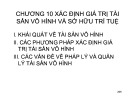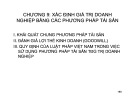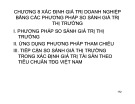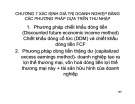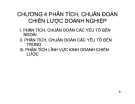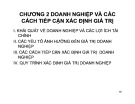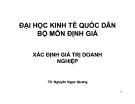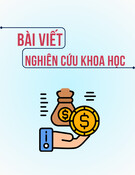
CHƯƠNG 6: CHI PHÍ VỐN
1. Chi phí vốn và giá trị được tạo ra
2. Chi phí vốn bình quân (WACC)
4. Mô hình CAPM
5. Mô hình ATP
5. Mô hình ATP
86

• A Risk must be rewarded
•
For usual claimants the
hurdle rate
1. Chi phí vốn và giá trị được
tạo ra
87
•
For usual claimants the
hurdle rate
on invested capital must exceed
the return on capital employed

Capital Employed and Invested Capital ?
Current Assets :
-Cash
-Marketable Securities
-
Accounts & Notes Receivable
Assets
Liabilities &
Stockholder’s Equity
Current Liabilities :
-Accounts Payable
-Notes Payable
-
Accrued Tax
Balance Sheet
Current
Working Capital
Net cash
[Long
-
term bank loans
Operational
(Capital employed)
Financing
(Invested Capital)
88
-
Accounts & Notes Receivable
-Inventory
Fixed Assets :
-Equipment
-Building
-Land
-
Accrued Tax
Long-term Liabilities :
-Long-term bank loans
-Bonds
Stockholder’s Equity :
Working Capital
Fixed Assets
[Long
-
term bank loans
- cash]
Equity
Value Added when
Return on Capital Employed > (Hurdle) Return on invested Capital

Capital Employed Capital Invested
Fixed Assets
Current
Working Capital Net cash Debt Cost
kd
Hurdle Rate on Invested Capital
= the Cost of Capital
Fixed Assets
Equity Equity Cost
ke
Value is created when a company is able to get a
return on its assets higher than its WACC

2. Chi
phí
vốn
bình
quân
-
(WACC)
The weighted
average cost of capital
• The weighted average cost of capital is the market-based weighted average of
the after-tax cost of debt and cost of equity :
WACC = D/V*kd(1 − Tm)+ E/V*ke
• where
–D/V = Target level of debt to enterprise value using market-based values
–E/V = Target level of equity to enterprise value using market-based values
–kd= Cost of debt
–ke= Cost of equity
–Tm= Company’s marginal income tax rate
90

